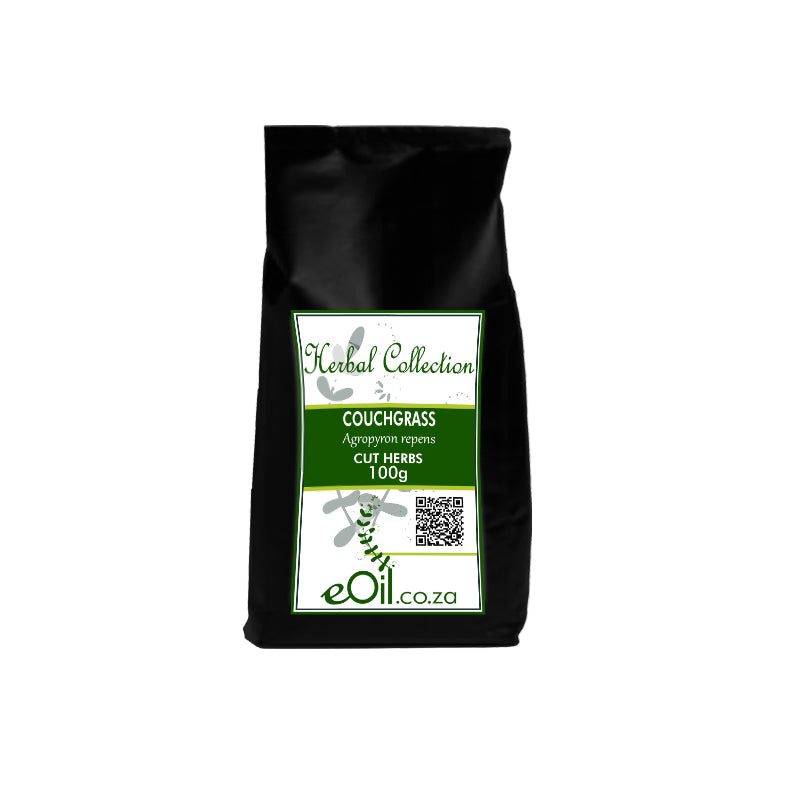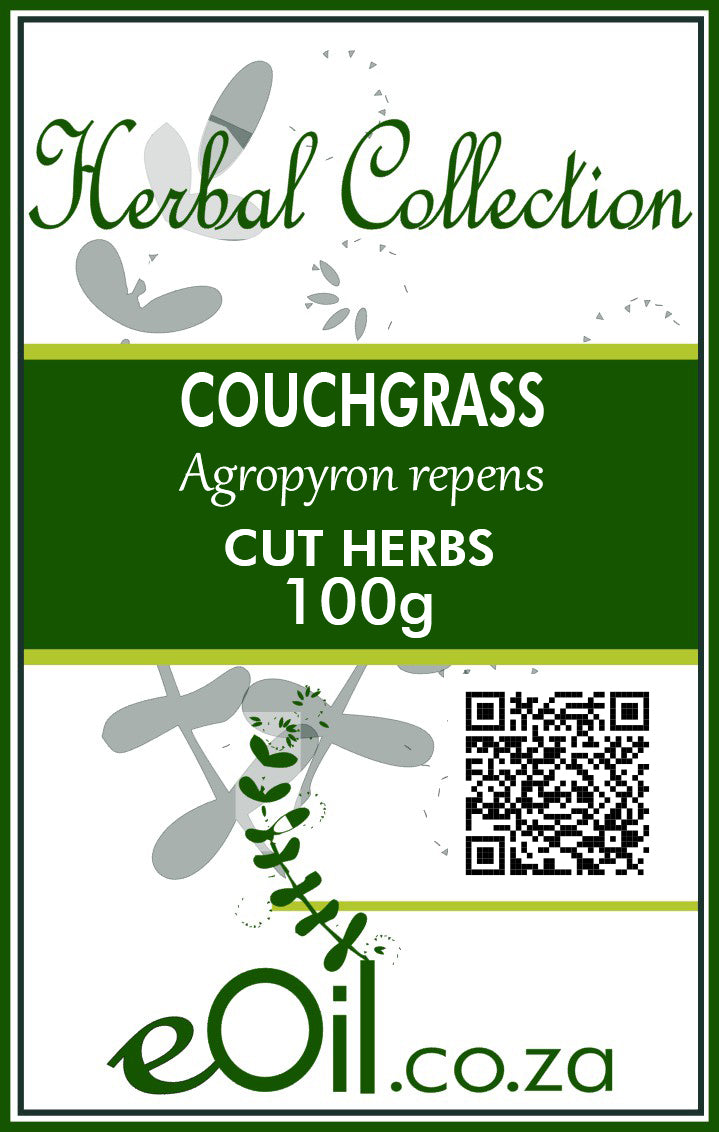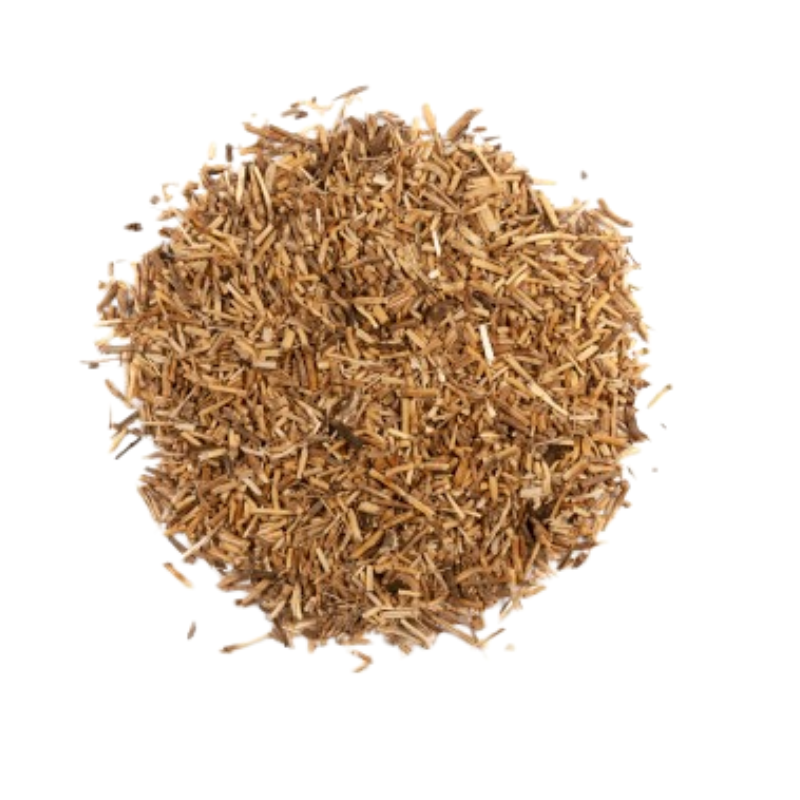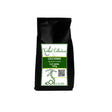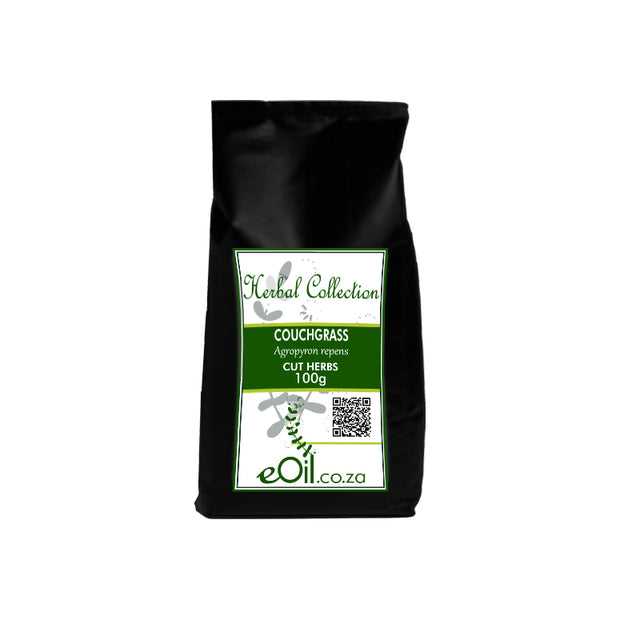Couchgrass Herb Cut - Herbal Collection
Couchgrass Herb Cut - Herbal Collection - 100 GR is backordered and will ship as soon as it is back in stock.
Description
Description
Couchgrass Herb Cut (Elymus repens) features dried stems and roots of a perennial grass, valued for its mild, earthy flavor and versatility in herbal teas, infusions, and wellness blends.
Traditionally enjoyed for gentle, natural living projects.
100% pure, dried, and free from additives—ideal for creative herbal use
TRADITIONALLY USED FOR
Coughgrass, also known as couch grass or Elymus repens, is a perennial grass with a long history of traditional use in herbal medicine.
It is native to Europe, Asia, and North Africa and has been used for centuries by various cultures to treat various ailments.
The primary parts of the plant used for medicinal purposes are the rhizomes (underground stems) and roots.
Properties: Coughgrass possesses various properties that make it beneficial for human health. Some of its properties include:
- Diuretic: Coughgrass has diuretic properties, which means it can help increase the production and elimination of urine. This can be helpful in flushing out toxins from the body and maintaining kidney health.
- Anti-inflammatory: Coughgrass has been found to have anti-inflammatory properties, which can help reduce inflammation and pain in the body.
- Demulcent: The mucilage present in coughgrass can soothe irritated or inflamed tissues, particularly in the respiratory and urinary systems.
- Antimicrobial: Coughgrass has been found to have some antimicrobial properties, which can help protect the body against various types of infections.
Traditional uses and benefits: Coughgrass has been used traditionally for various purposes, some of which include:
- Respiratory issues: The demulcent properties of coughgrass can help soothe irritated respiratory tissues, making it an effective remedy for coughs, bronchitis, and other respiratory issues.
- Urinary problems: The diuretic properties of coughgrass can help relieve symptoms of urinary tract infections, kidney stones, and other urinary issues.
- Gastrointestinal issues: Coughgrass has been used to treat various gastrointestinal issues, such as constipation, diarrhea, and stomach cramps, due to its soothing and anti-inflammatory properties.
- Skin conditions: Coughgrass has been applied topically to help treat various skin conditions, such as eczema, psoriasis, and rashes, due to its anti-inflammatory and antimicrobial properties.
It is important to note that while coughgrass has been used traditionally for various health issues, scientific research supporting these uses is limited. It is always recommended to consult with a healthcare professional before using any herbal remedies, especially if you are pregnant, nursing, or have any pre-existing medical conditions.
INFORMATION
Source : http://www.wikiphyto.org/wiki/Chiendent_commun
Reference on http://www.wikiphyto.org
Translation in English by Google Translate (go to the page of the source linked | on Chrome cellphones go on the 3 dots on the top right and select translate in your preferred language | on laptop right click your mouse and select option translate when hoovering on the page
plant name
Common Quackgrass or Lesser Quackgrass , Creeping Quackgrass , Wheatgrass , Double Ended Grass
International Latin denomination
Elytrigia repens (L.) Desv. ex Nevsky, Agropyron repens (L.) P. Beauv. = Elymus repens (L.) Gould. = Triticum repens L.
botanical family
Poaceae (= Gramineae )
Description and habitat
- Cosmopolitan weed, widespread in the northern hemisphere, where it quickly invades fields up to 2000 m altitude
- Perennial herb 40 to 50 cm high, with long creeping rhizomes, thin alternate leaves, flowers grouped in flattened spikelets arranged in two rows facing each other
- Not to be confused with Cynodon dactylon Pers. (the large quackgrass ), which could nevertheless have the same effects (which is also on the French Pharmacopoeia list A (rhizome)
History and tradition
Parts used
- Rhizome (free of adventitious roots)
Dosage forms available
- Mother tincture of Triticum repens underground part
Usual dosages
Composition
Main components of the plant
- Fructans : triticine (3–8%), polysaccharide (polyholoside) related to inulin , phlein
- Mucilage (about 10%)
- Steroidal Genin Saponosides
- Polyols: mannitol, inositol
- Potassium salts
- Acid -alcohols ( glycolic acid , malic acid , citric acid )
- Essential oil in very small quantities: free fatty acids, monoterpenes ( carvacrol , thymol , carvone , menthol , etc.), trans-anethole , sesquiterpenes [1]
- Polyin ( agropyrene )
- Vanilloside (low amounts), vanillin
- Silicic acid and silicates
- Lectins
- 5-hydroxytrypophan [2]
Main components of buds or young shoots
Main components of essential oil
Properties
Plant properties
- Diuretic
- Hypolipidemic, leads to weight reduction [3]
- Antidiabetic (aqueous extract), hypoglycemic without action on insulin [4]
- Antitussive
- emollient
- Anti-oxidant, inhibits lipid peroxidation [5]
- Increased urinary aqueous elimination ( fructans )
- Antilithiasis (increases citraturia) [6]
- Agropyrene ( polyin ) from the essential oil is an antibacterial antibiotic
Bud properties
Properties of essential oil
Directions
Indications of the whole plant (phytotherapy)
- Drainage in inflammatory diseases of the urinary tract
- Prevention of renal lithiasis
- Adjuvant in gout and rheumatism
- Chronic dermatological diseases
Indications of the bud (gemmotherapy)
Specific indications of essential oil (aromatherapy)
Known or suspected mode of action
- Inulin , a very flexible polysaccharide ( fructan ), is an osmotic diuretic: filtered by the renal glomerulus, it increases the osmotic pressure of the tubular fluid
- The mucilages dissolve more or less and swell on contact with water to form gels or colloidal solutions
Usual formulations
- Decoction in two stages:
Regulations
- French Pharmacopoeia list A (rhizome)
Possible side effects and precautions for use
Bibliographic references
- Go↑ Voesel R, Schilcher H. Composition of the essential oil of Agropyrum repens rhizome. Plantamedica, 1989, vol. 55, no.4, pp. 399-400
- Go↑ Siegfried A. Korhammer, Ernst Haslinger. Isolation of a Biologically Active Substance from Rhizomes of Quackgrass [Elymus repens (L.) Gould]. J. Agric. Food Chem., 1994, 42 (9), pp 2048–2050
- Go↑ Maghrani M, Lemhadri A, Zeggwagh NA, El Amraoui M, Haloui M, Jouad H, Eddouks M. Effects of an aqueous extract of Triticum repens on lipid metabolism in normal and recent-onset diabetic rats. J Ethnopharmacol. 2004 Feb;90(2-3):331-7. PMID 15013198
- Go↑ Eddouks M, Maghrani M, Michel JB. Hypoglycaemic effect of Triticum repens P. Beauv. in normal and diabetic rats. J Ethnopharmacol. 2005 Nov 14;102(2):228-32. PMID 16099613
- Go↑ Petrova A. P, Krasnov E. A, Saprykina E. V, Subbotina Yu. A, Ermilova EV Chemical composition of couch grass and studies of its antioxidant activity in allergic contact dermatitis. Pharmaceutical chemistry journal, 2009, vol. 43, no.1, p. 48-50 [1]
- Go↑ Grases F, Ramis M, Costa-Bauzá A, March JG. Effect of Herniaria hirsuta and Agropyron repens on calcium oxalate urolithiasis risk in rats. J Ethnopharmacol. 1995 Mar;45(3):211-4. PMID 7623486
- Go↑ Valnet Jean. Phytotherapy. Ed. Maloine. Paris, 1972 and many subsequent editions
- List of references supporting the assessment of Agropyron repens (L.) P. Beauv., rhizoma. EMEA, 27 January 2011 EMA/HMPC/563402/2010 Committee on Herbal Medicinal Products (HMPC) [2]
CAUTION
Store in a cool, dry place, away from light. Keep tightly closed, away from the reach of Children and pets.
Do not exceed the daily dose.
This product is not intended to prevent or cure any form of illness or disease.
If you are pregnant or nursing ; If you have a medical condition or are in the course of medical treatment ; If you are programmed for theater/operation in the near future, please consult your healthcare practitioner before using this product.
This product cannot replace a varied and balanced diet and a healthy lifestyle.
This product has not been evaluated by the SAHPRA for its quality, safety or intended use.
For More Information please check our General Safety Herbal products Page

Couchgrass Herb Cut - Herbal Collection - 100 GR is backordered and will ship as soon as it is back in stock.

